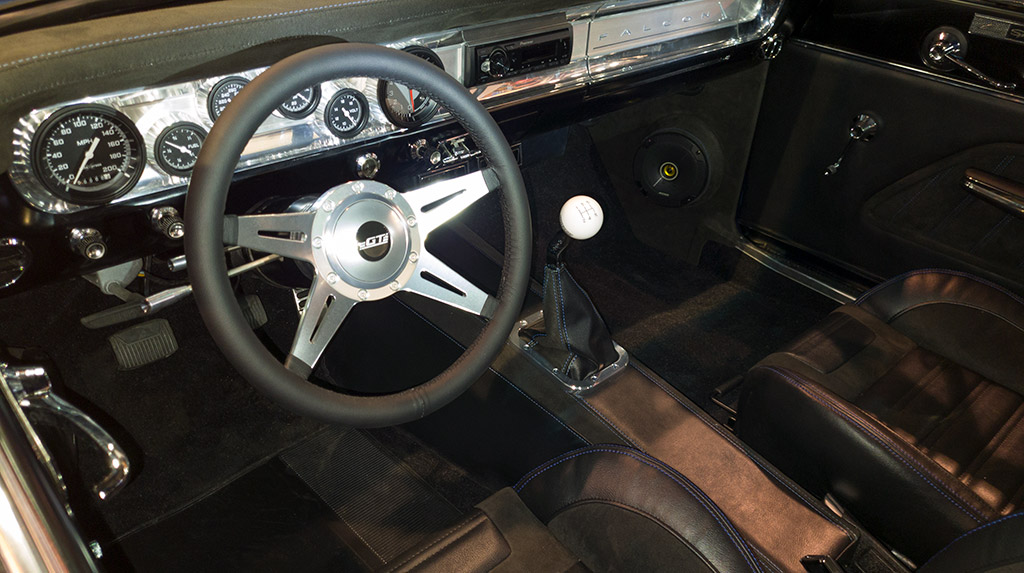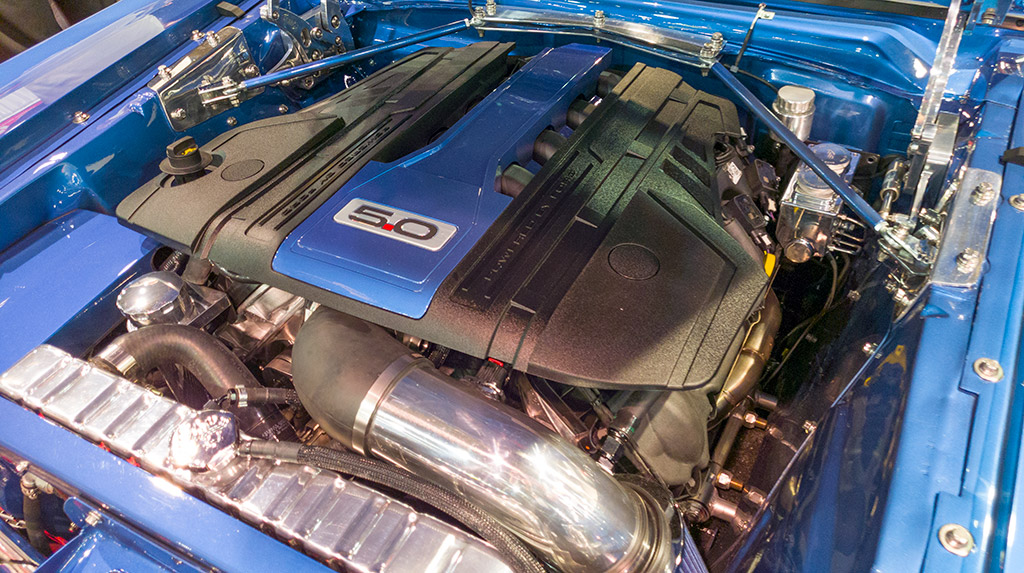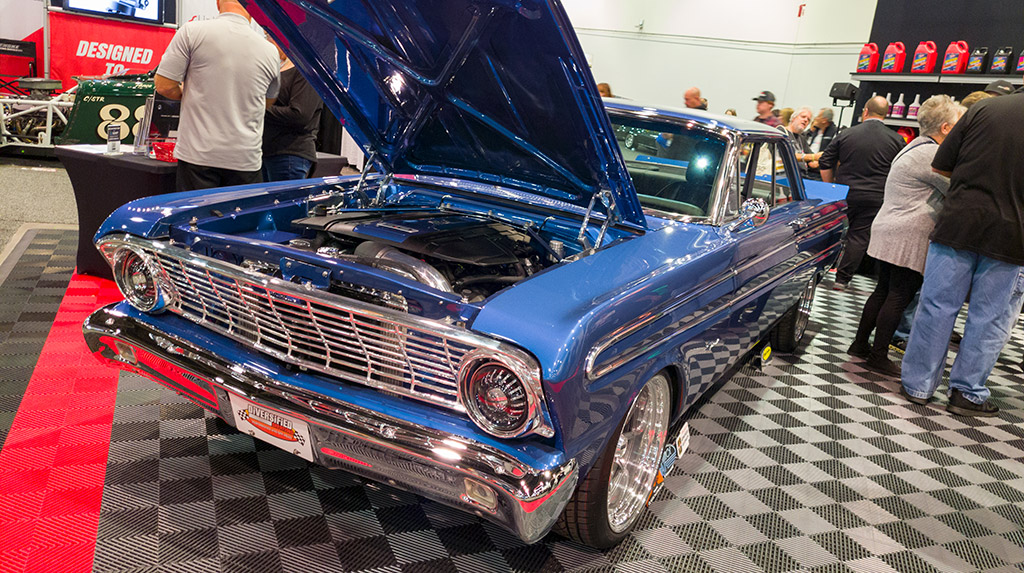Mike Copeland and his company, Arrington Performance, made headlines in 2021 with the 1948 Chevrolet Truck they built showcasing a hydrogen fuel conversion system being developed for existing internal combustion (ICE) gasoline-fueled engines. Now they’ve taken the concept to the next level with the recently completed 1964 Ford Falcon built with a modern Ford Gen 3 Coyote V8 that runs on hydrogen and is backed by a TREMEC TKX 5-speed transmission.
While a lot of automotive aftermarket companies have been pursuing the big electric vehicle (EV) push, Arrington Performance has been developing a different alternative fuel source. The hydrogen fuel conversion that Arrington Performance is working on is designed to convert existing internal combustion engines (ICE) to run on gaseous hydrogen as a fuel source. The 1948 Chevy truck was powered by an GM LS-series V8 engine that, as Mike puts it, “was overbuilt because they were unsure exactly what kind of stresses the alternative fuel would create on the engine’s components.” After running through various proving trials, it was found that many of the heavy-duty upgrades to that engine were unnecessary. So for the Arrington Performance’s next test vehicle, a completely stock engine would be used.

The Falcon uses Total Cost Involved (TCI) front and rear suspension, with a Mustang II steering system up front and a Moser 9-inch rear axle with a Detroit Tru-Trac differential and 3.50 gears. The rear suspension is a torque arm system. QA1 coilovers control the suspension movement at all four corners, and Baer 14-inch Pro+ brakes get things slowed down so fast you think the Earth has stopped rotating. The Falcon’s engine is a stock Ford Gen 3 5.0L Coyote V8 with direct injection; the same powerplant in the current Ford Mustang and Ford trucks. The engine’s direct injection system handles the hydrogen fuel with Bosch experimental injectors optimized for hydrogen. The Ford port injectors were replaced with injectors designed for water and are used to spray water into the mix as a method of temperature control inside the cylinders. Adding computer-controlled water injection in the port allowed Arrington Performance to precisely control the burn rate of the hydrogen. The burn rate of hydrogen – approximately 3 times faster than gasoline – allows the maximum engine rpm to be raised to 8,000. The end result is that the engine makes 10 percent more power on hydrogen than on gasoline.

The engine runs at the same optimal operating temperature as it did running on gasoline, but with 10-percent more power output. So instead of the factory 460 horsepower, this Coyote makes approximately 500 horsepower. There is a 6-gallon water tank to fuel the water injection system, but early testing has shown that the tank size can be reduced. The hydrogen fuel used is generated through an electrolysis process that takes less energy to produce than the refining process for gasoline, without the toxic byproducts once the process is finished.
For getting that horsepower to the rear wheels, the Falcon uses a TREMEC TKX 5-speed transmission from American Powertrain. Mike said, “In addition to the efficiency of the TREMEC TKX compared to an automatic transmission, I chose a manual transmission for the car because it just makes it fun to drive.” The clutch is a McLeod single-disc clutch.
Since debuting the 1948 Chevy truck at the 2021 SEMA Show, Mike has found that there are several misconceptions and misinformation hydrogen-fueled vehicles. For example, Mike says that using hydrogen doesn’t make the vehicle any more dangerous or at risk for a fire incident in a severe collision. Nor is their need for any sort of armored fuel tank for safety. The hydrogen used for both the Falcon and Chevy truck is in a gaseous form, not liquid. In the event of a collision strong enough to rupture the fuel tank, the hydrogen fuel is actually less likely to burn compared to a tank filled with gasoline.
In fact, the fuel tanks used for running the hydrogen are safer than current production gasoline fuel tanks. In addition to an outer shell, these hydrogen tanks feature an internal bladder that is designed to protect against leaks. The hydrogen tank that was used in this vehicle build is DOT certified.
Like the 1948 Chevy truck, this Falcon is far more than a show queen, It is destined to hit the road for long trips along with autocross and road courses. Plans also call for the Falcon to undergo full EPA emissions testing at the SEMA Garage in Detroit to gather full data.

